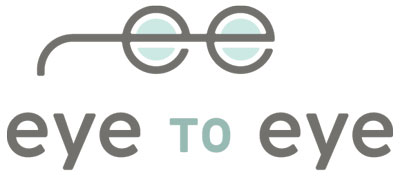Do you have Computer Vision Syndrome?
What is Computer Vision Syndrome?
Computer Vision Syndrome, or CVS describes a group of vision-related problems that result from prolonged and uninterrupted use of digital screens such as tablets, e-readers, smart phones and computer screens.
What are the symptoms?
- Eye fatigue
- Dry eyes
- Burning eyes
- Light sensitivity
- Blurred vision
- Headaches
- Pain in the shoulders, neck or back.
Who does this affect?
Computer Vision Syndrome affects 75% of the people who work on computers, most markedly those over the age of 40.
Did you know?
The average American worker spends 7 hours a day staring at a computer screen, either at the office or while working at home.
What causes it?
- Decreased blink rate: We actually blink 66% less while working on the computer.
- Glare and reflection on your computer monitor
- Your monitor: The refresh rate of many monitors is 60 Hz. This speed can cause a flicker that makes the screen appear to roll. The flicker stimulates the eye to accommodate or to refocus, tiring the visual system.
Tip: Reset the refresh rate of the monitor to 70-85Hz.
(Read your monitor or computer hardware instruction manual to be sure your monitor is capable of this setting.)
- Ergonomics: Poorly set up workstations will cause pain due to repetitive injury. This is especially a consideration in people over 40, who have a decrease in focusing ability and rely on bifocals.
Poor positioning of your monitor can make it difficult to focus on the screen. What types of repetitive work do you do? Where is your paper in relationship to your screen? How big is your monitor? What size and color is your font? Check brightness/ contrast.
How do you treat it?
- Get a comprehensive eye exam
- There is actually a lot of new technology available when we talk about computer glasses. There are new lens designs specifically for people who look at multiple monitors, as well as for people who work in a cubicle setting. A new pair of task oriented glasses designed for your workspace may ease a lot of your eye strain.
- Use proper lighting
- Minimize glare
- Upgrade your display: get something with a refresh rate of more than 75 hertz, preferable a backlit LCD
- Adjust your display settings:
Brightness. adjust the brightness to the same as the surrounding workstation (not too bright)
Text size and contrast. black print on white is usually the best combination—increase text size to something comfortable for you
Color Temperature. Blue light is associated with more eye strain than longer wave hues, such as orange and red. Try using a plug-in like f.lux that will adjust your monitor colors for different times of day, or invest in a monitor that has built in color temperature settings, such as the BenQ BL3200 (my monitor of choice!)
- Make a conscious effort to blink more often
- Take frequent breaks (every 20 minutes) and stare off into the distance (at least 20 feet away, for at least 20 seconds) to relax your eye muscles. Some doctors call this the 20-20-20 rule.
- Modify your workstation so that your monitor is 20-24 inches from your eyes, and light your surrounding desktop to match your screen brightness
How do you prevent it?
See above. :)


